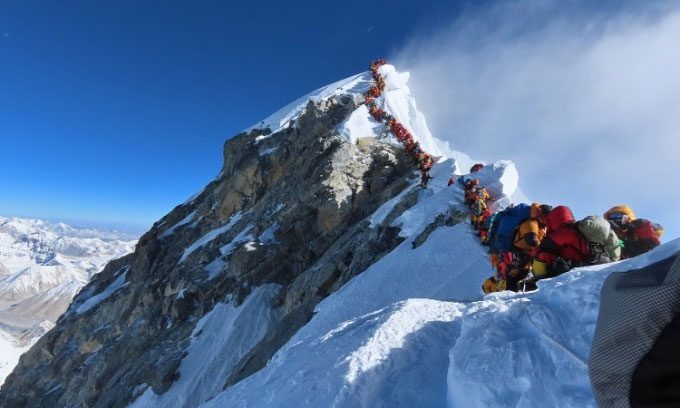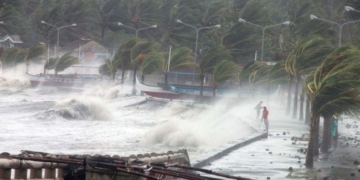Researchers have discovered that many types of bacteria brought by climbers can survive for centuries in the ice on Mount Everest.

Mount Everest is preserving bacteria released by humans. (Photo: Nirmal Purja).
Each year, hundreds of climbers camp at the South Col Glacier on the southern slope of Mount Everest to prepare for their ascent of the “roof of the world.” A recent study published in the journal Arctic, Antarctic, and Alpine Research reveals that they may leave behind some resilient bacteria capable of surviving in the harsh, frozen environment of the mountain. Despite the extreme conditions on Everest, the research team cultivated bacteria and fungi extracted from sediments on the mountain. Although most of these organisms remain dormant, they can be transported to snow-free areas of South Col by wind or human activity, as reported by Science Alert on March 15.
Located in the Mahalangur Himal range of the Himalayas, Mount Everest stands at an elevation of 8,849 meters above sea level. The high-altitude environment of Everest is among the most extreme conditions on Earth. The South Col Glacier is where the research team, led by microbial ecologist Nicholas Dragone from the University of Colorado Boulder (CU Boulder), collected soil samples at an elevation of over 2,400 meters above sea level. Thus, the research team was surprised to find that even bacteria adapted to warm and humid conditions in the human nose and throat, such as Staphylococcus and Streptococcus, can remain dormant and survive in such cold and dry environments.
In addition to traditional techniques like culturing bacteria on nutrient-rich agar plates, the research team also sequenced genetic material from the soil to identify specific bacteria. Team members have previously examined soil samples from other locations such as the Andes, Himalayas, and Antarctica, but this is the first time that samples at such high elevations have provided clear evidence of microorganisms related to humans.
The high density of ultraviolet light, low temperatures, and scarcity of water all contribute to bacteria dying at high altitudes, so only the hardiest microorganisms can withstand such harsh climates. Staphylococcus and Streptococcus are commonly found in soil, but the gene sequences in this study resemble those of species that typically colonize human skin and mouths.
The samples were taken 170 meters away from the climbers’ campsite. The research team predicts that if they sampled closer to human habitation, they might find more evidence of bacteria. Most bacteria remain dormant or die when exposed to extreme conditions, but some organisms can develop during short periods when water is available. Since air temperatures at South Col rarely exceed -10 degrees Celsius, it remains unclear whether water from melting ice supports bacterial growth.
The soil at South Col and many other high regions can preserve and freeze bacteria brought by humans. However, temperatures on Mount Everest are rising by 0.33 degrees Celsius per decade. In July 2022, South Col recorded a record high temperature of -1.4 degrees Celsius. This warming trend may create conditions for microorganisms to become active again in the future.


















































